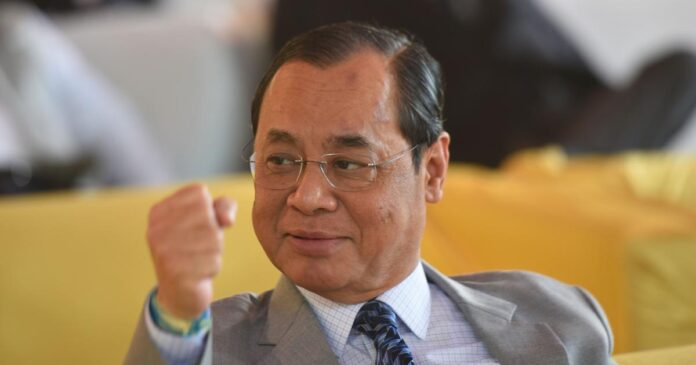Ranjan Gogoi, the 46th Chief Justice of India, has retired. Now is the time to assess his legacy. The tenure of his predecessor, Justice Dipak Misra, was marred by controversies which reached such proportions that a leading political party attempted to impeach him. Justice Gogoi was one of the four judges of the Supreme Court who held an unprecedented press conference against Justice Misra, accusing him of putting democracy in peril. The fact is, by the time Justice Misra demitted office, the image of the Supreme Court had taken a hit. Therefore, when Justice Gogoi stepped into his shoes, there was an air of expectancy. Unfortunately, Justice Gogoi courted more controversies than his predecessor.

Writer : Rekha Sharma, Former High court Judge
Allegations of sexual harassment were levelled against Justice Gogoi by an ex-staffer of the Court. The allegations were damning, but equally disturbing was the response of the CJI — one of panic. Instead of constituting a sexual harassment committee, he constituted a special bench of the Court on the advice of the Solicitor General, comprising three judges to address the issue which was purely personal to him. Worse still, he himself presided over that bench ignoring the fundamental jurisprudential principle, Nemo judax in causa sua — no one can be a judge in his own cause.
In a special sitting, which was held on a Court holiday, the chief justice rubbished the allegations and alluded to some larger conspiracy to destabilise the office of the Chief Justice of India. He also talked about his meagre bank balance and unblemished record, even though no one had questioned his financial or professional integrity. The bench did not pass any order on the issue except to advise the media that given the sensitivities of the matter, it should exercise restraint.
After the special bench, an in-house panel of three judges was formed to examine whether the allegations warranted an inquiry. The formation of the panel was objected to by the complainant, and also by some independent voices. One of the judges from within the SC was reported to have expressed the view that the panel should have been more broad-based — that it should have included an external member and the complainant should have been allowed the assistance of a lawyer. The complainant, who initially participated in the proceedings, walked out of the same raising various objections to the procedure adopted by the panel, including denial of assistance of a lawyer to her. However, the panel proceeded and concluded its inquiry, eventually exonerating the chief justice.
Transparency in matters of appointment to the higher judiciary has been a casualty during Justice Gogoi’s tenure: Under his stewardship, a judge who was a junior by 32 notches was appointed to the SC, ignoring the all-India seniority levels of others. As gathered from the SC website, the only reason assigned for ignoring the others was that the one chosen was found to be more meritorious. However, later, at least two of those ignored were made chief justices of high courts, and were also brought to the SC. This indicates that the two later appointees were equally deserving, and yet, were overlooked at a given point in time. More recently, the collegium recommended Justice Akil Kureshi of the Gujarat High Court as the chief justice of the Madhya Pradesh High Court. The government reportedly did not agree with the recommendation. The collegium, instead of reiterating its initial recommendation, changed their original stance and recommended him to the Tripura High Court.
In the aftermath of the abrogation of Article 370, a number of habeas corpus petitions concerning the personal liberty of citizens were filed: These were routinely adjourned on the mere plea of the state that there has to be a balance between personal liberty of an individual and national security. It is nobody’s case that those detained should have been set free, but considering that individual liberties were at stake, if nothing else, they were at least entitled to an urgent hearing. Justice Gogoi, while delivering the third Ramnath Goenka Memorial Lecture on ‘Vision of Justice’, said that the judiciary “is the last bastion of hope and the one that the citizenry believes firmly will give justice to them, come what may”. The words sound hollow.
To be fair, Justice Gogoi took the bull by the horns in hearing and deciding the decades-old Ayodhya dispute. The judgment brings closure to the most controversial issue of present-day India. Thus, the tenure of the chief justice, which started with a whimper, has ended with a bang.
This article first appeared in the print edition on November 20, 2019 under the title ‘Hits and misses’ in the Indian Express Newspapar . The writer is a former judge of the Delhi High Court. Views are personal.






